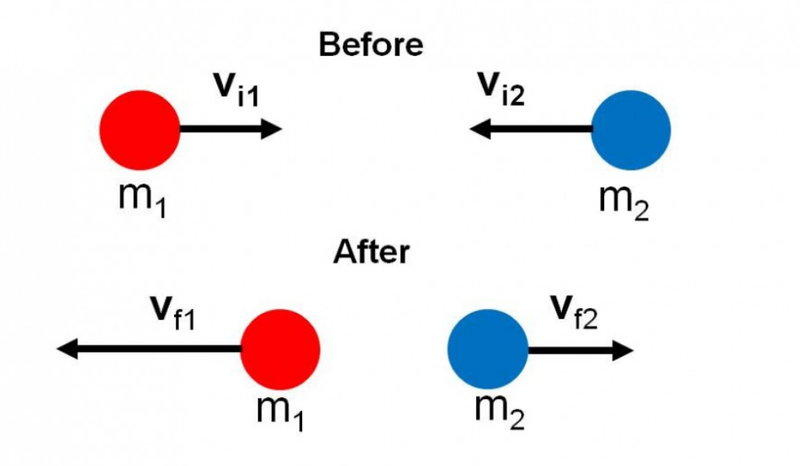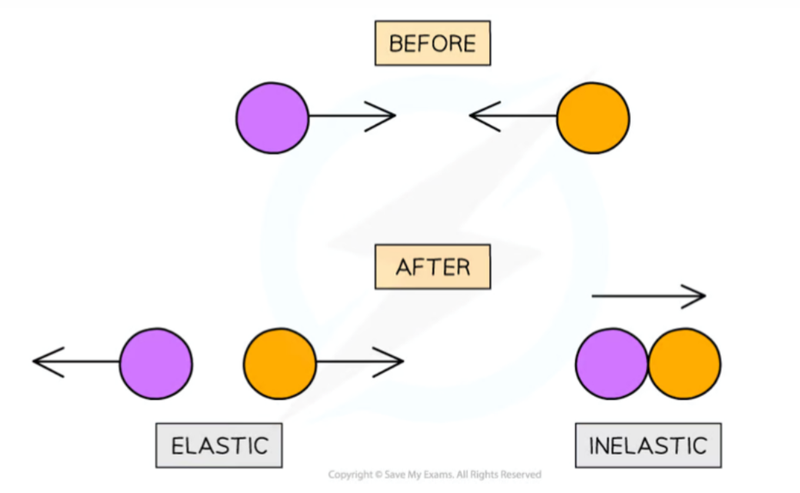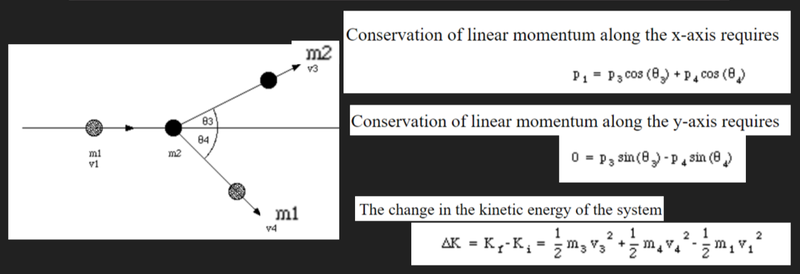What is Linear Momentum?
- Any object that has both mass and velocity has (linear) momentum.
- Momentum, p, is given by the formula:
p = m * v
- Where p is momentum, with the unit kgms ⁻¹
- m is mass with the unit kg
- v is velocity with the unit ms ⁻¹
- Momentum is a vector quantity that describes the motion of an object.
- Momentum is always conserved, and does not change unless there is an external force.
- The change in momentum is equal to the force applied.
Conservation of Momentum
- The conservation of momentum is the most important principle to keep in mind when it comes linear momentum.
- It states that in any collision or explosion momentum is conserved, provided that there are no external forces that have an effect.
- This means that without any external forces acting on the system, the total initial momentum will always be equal to the total final momentum.
Collisions
- In physics, a collision is when two bodies come into contact with one another and exert forces on each other for a brief time.
- There are two types of collisions, elastic and inelastic collisions.
- In elastic collisions, both total momentum and total kinetic energy are conserved.
- In inelastic collisions, only total momentum is conserved.
- Depending on how much kinetic energy is lost, the collision is said to be "more inelastic" or "less elastic".
Elastic Collisions
- Momentum can be passed between objects during collisions, where one object loses the momentum they had, and the other gains it, meaning that total momentum is still conserved.

- Another type of elastic collision is when two objects collide and change directions.

Inelastic Collisions
- Sometimes when objects collide, they "stick" together and keep moving as a single mass.

- As momentum is conserved, the momentum of the first and second object must equal their momentum when they are moving as one.
- As they will be heavier, they are often slower when moving together.
- As kinetic energy is described as Eₖ= 1/2(mv ²) , the reduction in velocity will actually lead to a reduction in kinetic energy, as velocity is squared.
- Kinetic energy can be lost as it is converted into other types of energy, such as heat.

Explosions
- In physics, an explosion describes when two or more masses, which were initially at rest, are propelled apart from each other.
- Momentum is still conserved in an explosion.
- Considering that the objects are initially still, the momentum of the objects propelled away from each other must cancel out, so that the total momentum is still zero.
- In an explosion, kinetic energy is increased, as masses that were still before now have velocity.
- The kinetic energy increase comes as other forms of energy, such as chemical energy, are converted into kinetic energy.
Collisions and Explosions in Two Dimensions
- For collisions or explosions in two dimensions, the law of conversation of momentum can be applied in two perpendicular directions.
- After an explosion or collision, if the new momentum is in different angles, then the total momentum can be found by decomposing and adding and subtracting the vectors of momentum.
- The total momentum should always stay the same before and after the collision or explosion.
Example

Another Way to Find Kinetic Energy
- The most common equation for kinetic energy is Eₖ= 1/2(mv ²), however as momentum is described as p = mv, we can create a new equation.
Eₖ = p²/(2m)
- This equation is useful for finding kinetic energy without having to separately calculate velocity.
Sources
https://revisionscience.com/gcse-revision/physics/forces-motion/momentum-and-collisions
https://veien-drom.blogspot.com/2016/03/conservation-of-momentum-and-energy-in.html